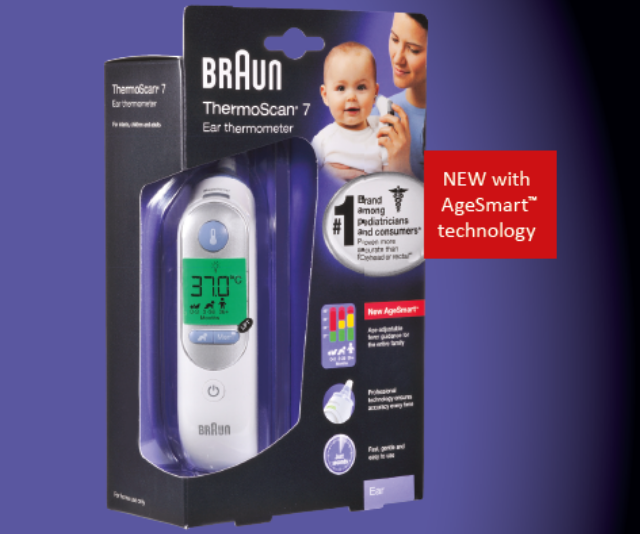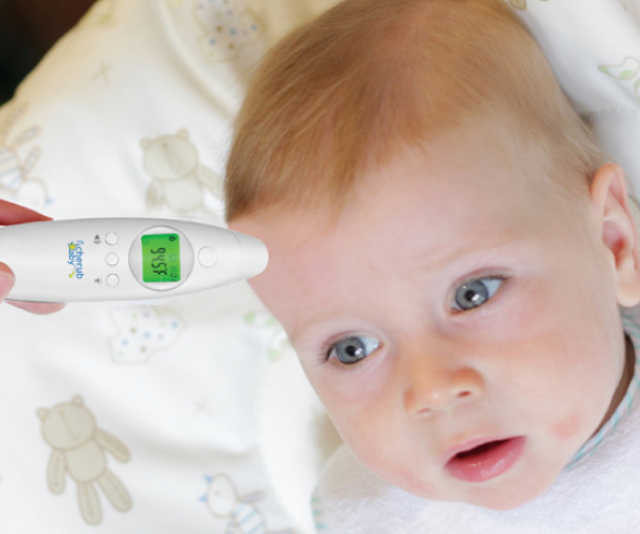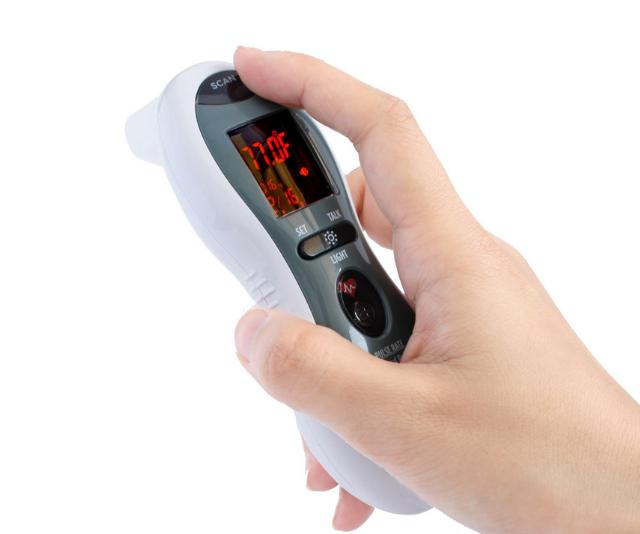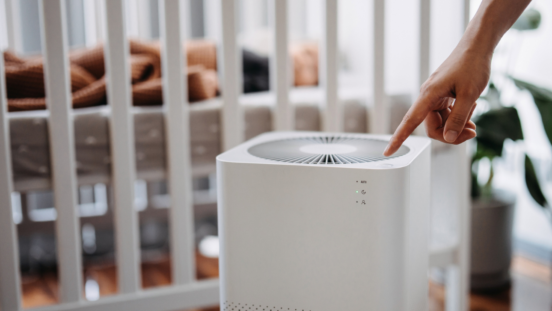5 of the best digital thermometers for Australian families
For when you need to identify a fever quickly.
Peace of mind when your baby is unwell, particularly when they’re very young and there seems to be so much more to worry about, is easier to come by when you have the right equipment at home.
Parents wonder: are these symptoms normal, or are they the sign of something more serious? How do I treat them safely? Is this a fever, or are they just warm?
Fortunately there are some wonderful digital thermometers on the market which provide fast, accurate readings on your child’s temperature allowing you to make confident decisions about the care for your child.
We’ve shared some of our favourites in the gallery below …

Peace of mind is easy to come by when you have the right equipment at home.
Withings Thermo Smart Temporal Thermometer, RRP $179.99
This Wi-Fi connected temporal artery thermometer features a revolutionary 16-sensor array that requires no contact, and delivers the fastest, most precise temperature possible.
An exceedingly simple scan across the forehead requires no contact with the skin, so prevents any contact if you are sick and stops the spreading of germs – an extremely sanitary way to take anyone’s temperature.
Automatic sync with the dedicated app also allows you to track temperature readings, get reminders, and input related symptoms/medications right on your smartphone.

The Braun ThermoScan 7 Ear Thermometer, RRP $139.99
Fast results in just one second makes this thermometer ideal for fussy infants. The unique positioning system lights up and beeps when placed in the correct position for accurate reading.
With AgeSmart™ technology – fever definition is adjusted for child’s age.

The Cherub Baby 4-in-1 Infared Digital Ear and Forehead Thermometer, RRP $99.99.
The Cherub Baby 4 in 1 Infrared Digital Ear and Forehead thermometer V2 works without probe covers and is easy to operate, hygienic, comfortable and provides very accurate readings.
Opt for forehead or ear temperature in just one second while an alert sounds if there is a fever present (temperature over 38°).

DualScan® ULTRA PULSE Talking Ear and Forehead Digital Thermometer, RRP $29.99
The Ultra Pulse model features DualScan Temperature reading, a fingertip pulse rate checker, a flashlight for capturing readings in a darkened room and voice read-outs in 3 languages.

The Oricom FS300 Non-Contact Infared Thermometer, RRP $94.95
The FS300 allows you to measure your baby’s temperature in a non-invasive way with no direct contact, making it hygienic for your baby.
It provides ear and forehead reading and fingertip pulse monitoring.
This versatile device provides fast and accurate temperature detection of the body, room or surface.

The dos and don’ts of taking baby’s temperature
CHOICE recommends the following for getting a more accurate temperature reading on your little one.
Dos:
-
- Find out what your child’s ‘baseline’ temperature is when they’re healthy.
- Always take your child’s temperature in the same way and in the same location: oral, rectal, armpit, ear, forehead, etc.
- Read the thermometer instructions so you know how to use it and what kind of body temperature the thermometer is displaying – is it the tympanic (ear) temperature, or the oral equivalent?
- Make sure your child stays still while you’re taking their temperature. (Easier said than done, we know!)
- Make sure the ear thermometer is placed correctly in the ear, otherwise you may get an inaccurate reading. A build-up of earwax can also interfere with accuracy.
- Any baby under three months of age who has a fever should be taken straight to the nearest emergency department.
Don’ts:
-
- Don’t take your child’s temperature straight after they’ve bathed or showered, or after they’ve been active. It can raise their core temperature, so you may not get an accurate reading. If they’re sweating, it can also affect the reading of a forehead thermometer.
- Don’t take your child’s temperature straight after they’ve had food or drinks, if you’re using an oral thermometer. Hot or cold foods could influence the reading. Wait 15 to 30 minutes before taking their temperature.
- Don’t use ear thermometers on infants under six months – they’re generally not recommended due to the size of babies’ ear canals.
- Don’t use forehead thermometers on infants under three months; they’re generally not considered accurate for babies this young.
- Don’t bother using strip-type thermometers. Our testing has found that they’re very easy to use, but not very accurate.
- Don’t use mercury or alcohol thermometers. If they break, they can cause injury or poisoning.




